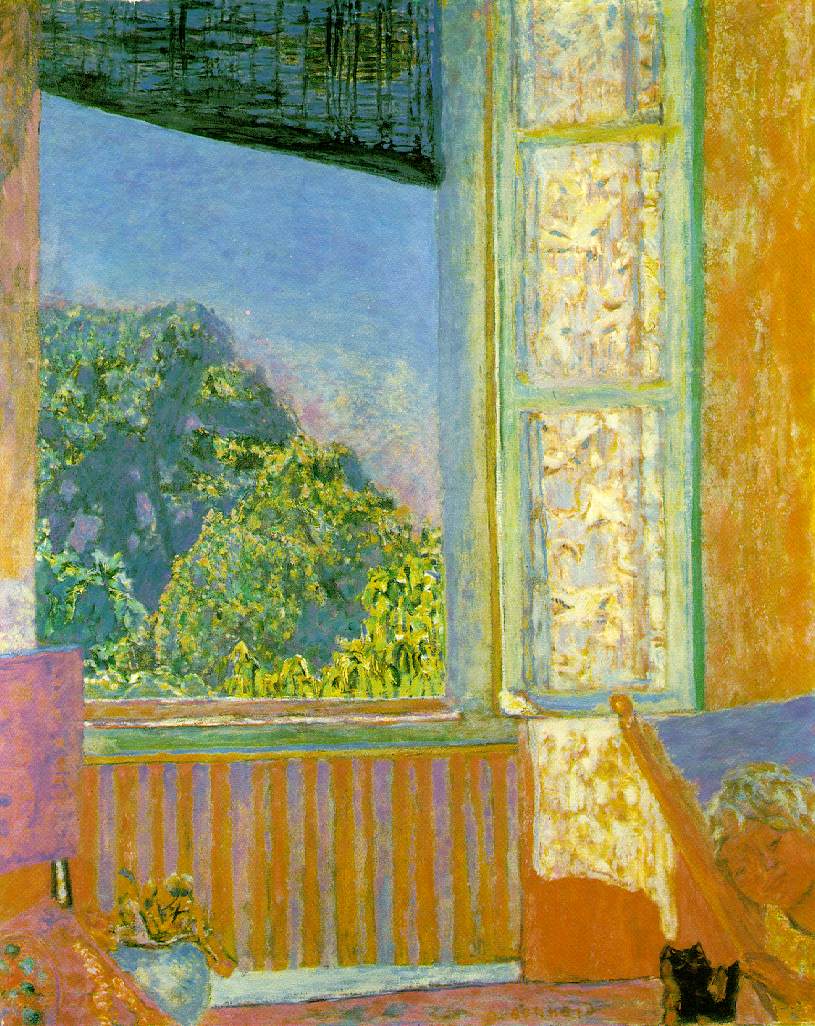The fourth of this month’s summer pictures is The Open Window, by Pierre Bonnard. Created in 1921, the work was inspired by the view from the sitting room of “Ma Roulotte”, the painter’s house at Vernonnet, in the Seine Valley. The mood of the summer afternoon siesta, languorous and indolent, is dreamily evoked. Bonnard uses his palette almost as if it were a narcotic substance, saturating his canvas with hues of orange, blue, indigo and violet that seem to pulse and vibrate on the retina. A becalmed room and the view to a radiant outdoors have been reformed as a tapestry of colour.
Familiar objects are recognisable, but transfigured. An expanse of striped wallpaper shifts and moves like a coloured mist; a patch of sunlit foliage catches fire. Colour has been set free by the artist from straightforward description, heightened and intensified. Yet the result seems neither exaggerated, nor abstracted from reality, but all the more true to life. This is the kind of summer’s day when the sun’s warmth seems to irradiate everything, even the world of indoors, with its steady glow.
Bonnard has been labelled an “Intimist”, on account of his preference for depicting intimate scenes of everyday life. As the critic Claude Roger-Marx remarked in 1893, right at the start of the artist’s career, he “catches fleeting poses, steals unconscious gestures, crystallises the most transient expressions”. In The Open Window, the painter uses both composition and colour to convey an effect of such extreme transience that it might barely register on the consciousness in normal, everyday life. The picture seems to recreate the experience of walking into a room after having just been outdoors on a hot day, eyes still dazzled by the sun’s glare, and gradually adjusting to the difference in light. The view...


